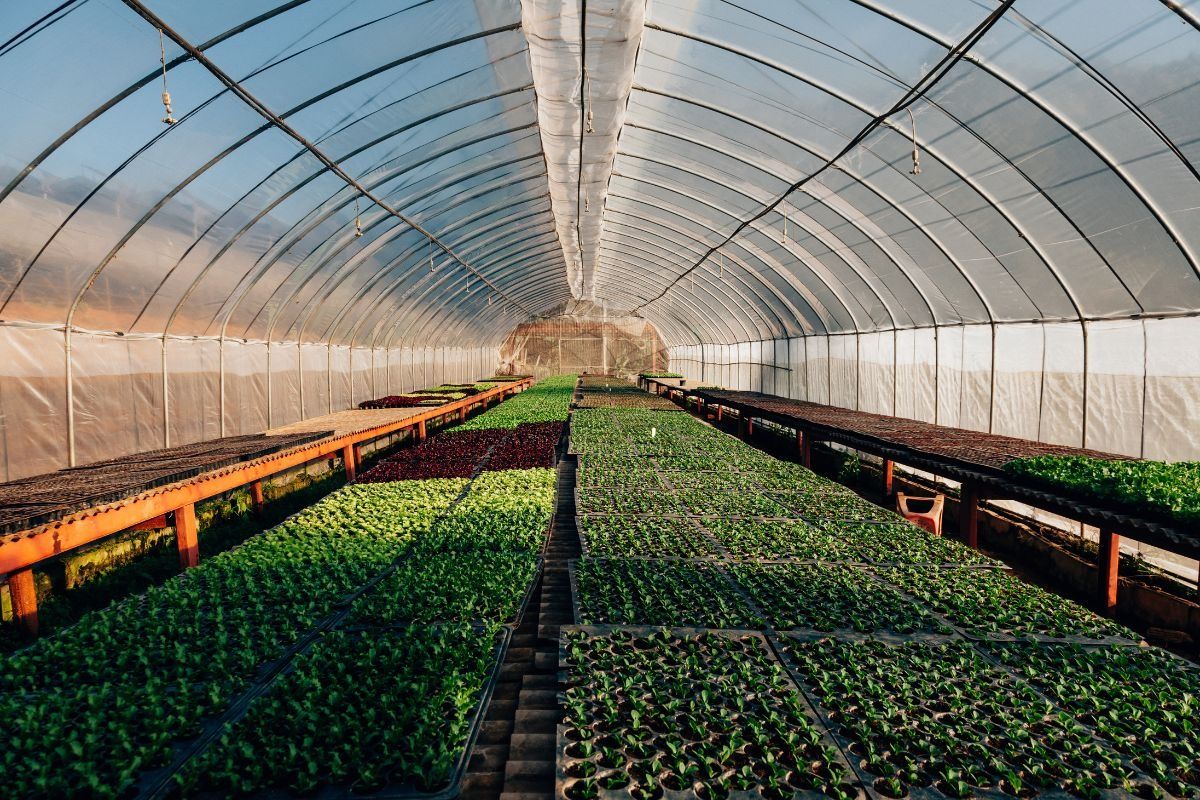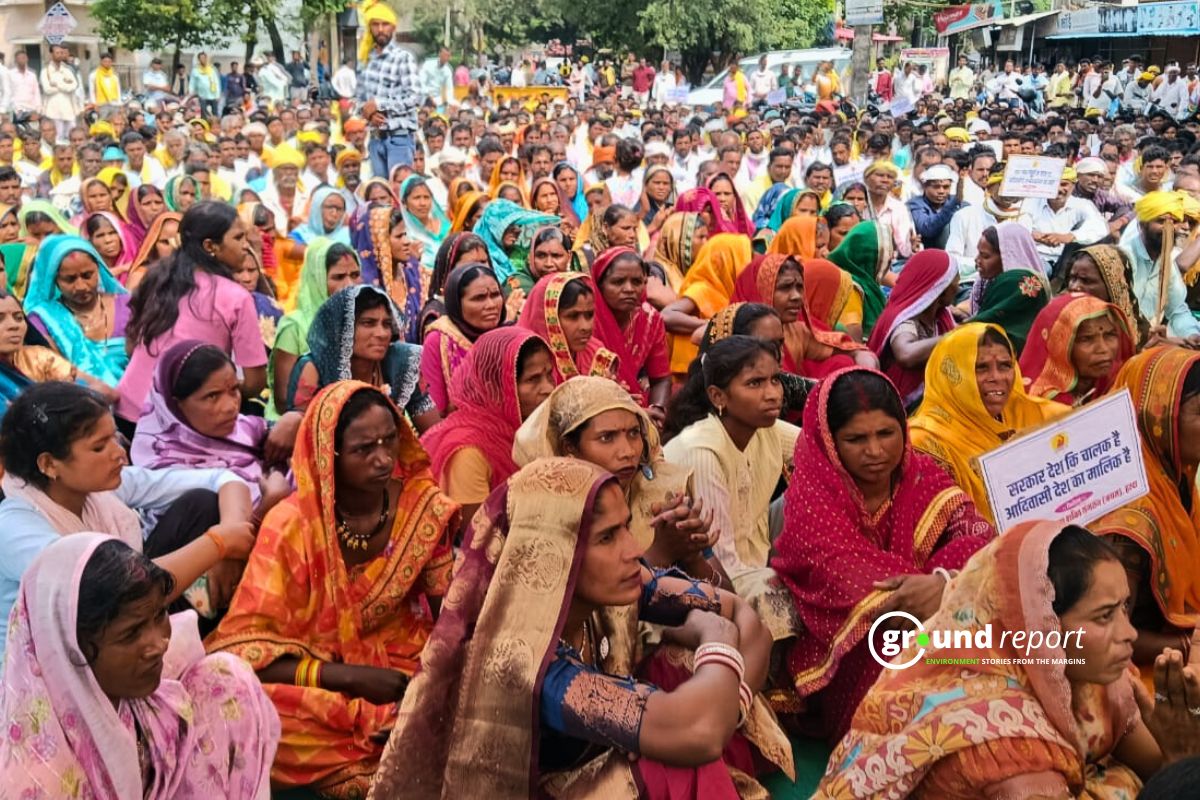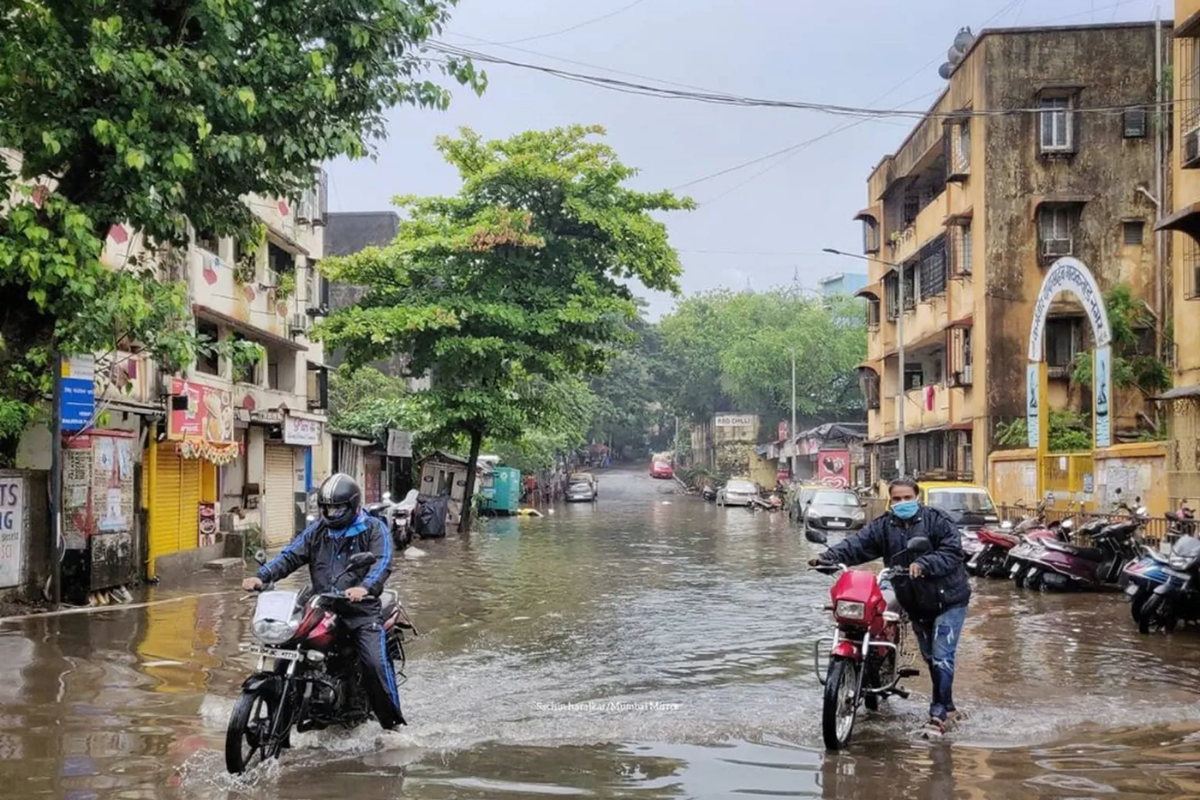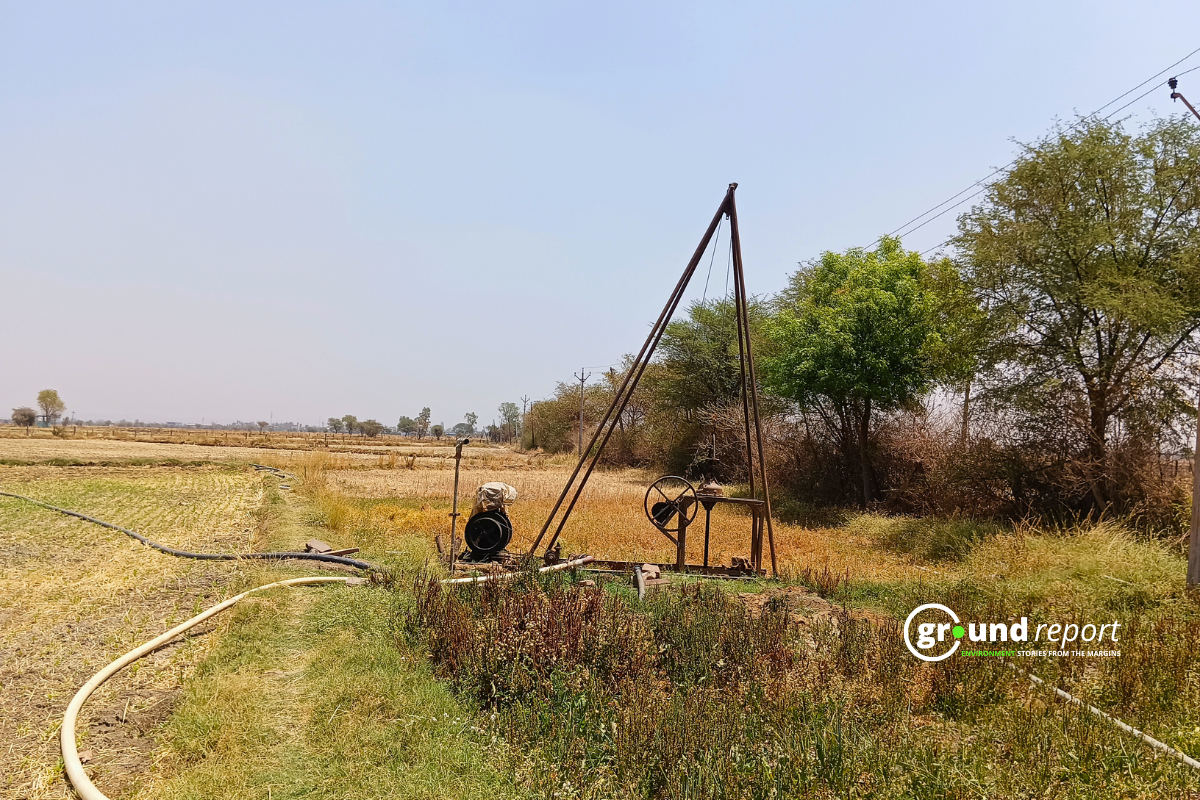Hydroponics in India is gaining attention as farmers search for smarter ways to overcome challenges like water scarcity, shrinking farmland, and unpredictable weather.
Traditional agriculture is under pressure, and many growers are struggling to maintain consistent yields.
Hydroponics, a soil-free farming method that utilizes nutrient-rich water, provides a sustainable and high-efficiency solution.
It uses up to 90% less water and can produce faster harvests in smaller spaces.
With innovative systems like hydroponic solutions, this method is becoming a real option for farmers looking to boost productivity, cut costs, and secure their future in agriculture.
This method is becoming a real option for farmers looking to boost productivity, cut costs, and secure their future in agriculture.
Indian Hydroponics Market Analysis
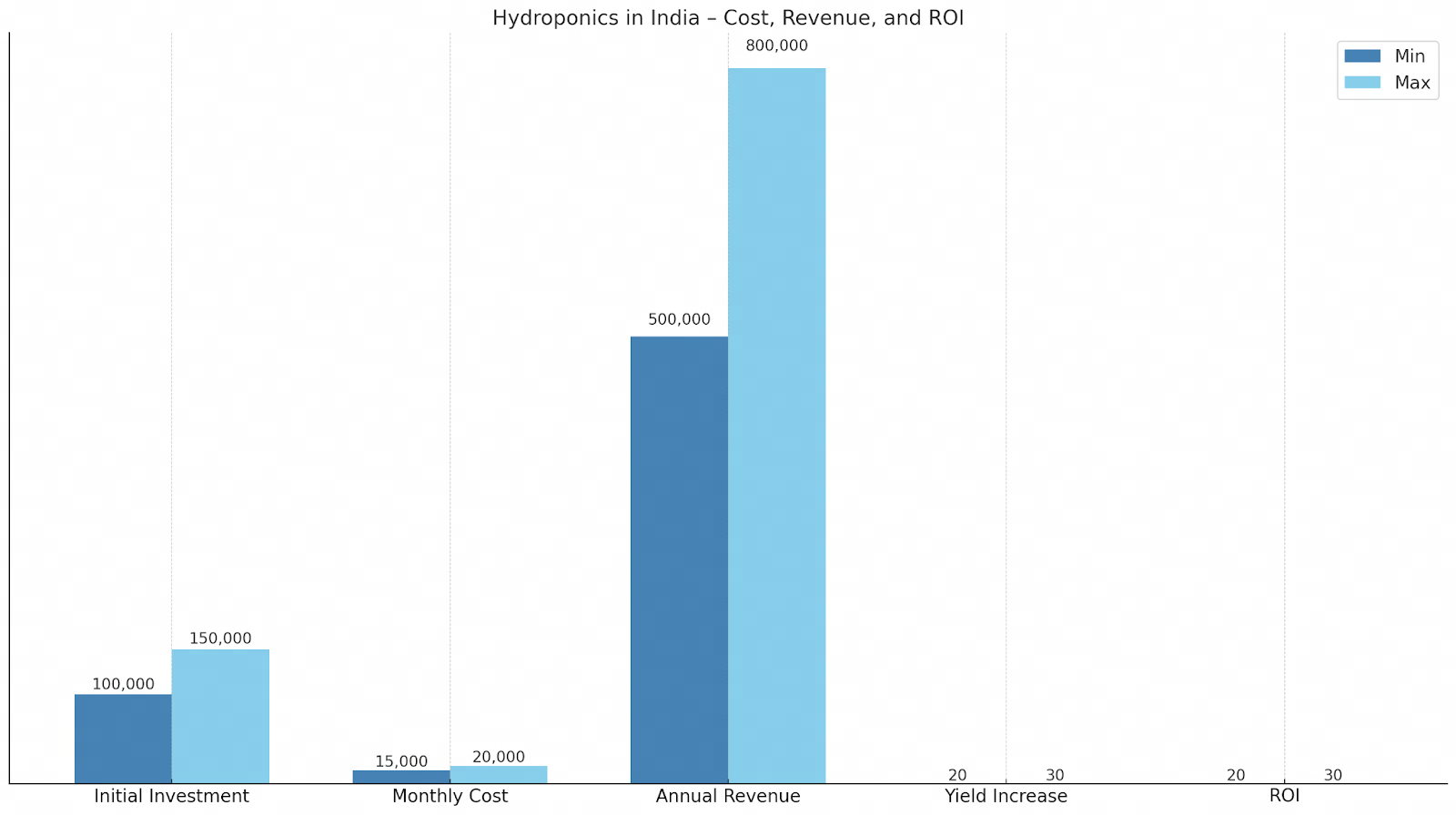
As demand rises for cleaner, more efficient water-saving farming methods, hydroponics in India is emerging as a game-changer for farms of all sizes.
Market Size & Projected Growth
India’s hydroponics market is expanding rapidly.
In 2024, the market was valued around USD 500–550 million, with reputable analysts projecting a compound annual growth rate (CAGR) of 15%–17% over the next 8–10 years.
Regional Adoption & Success Stories
Hydroponic farming has seen strong adoption in states like Maharashtra, Karnataka, Punjab, and Madhya Pradesh.
One notable success story involves a family in Ratlam (Madhya Pradesh) who transitioned from open-field cultivation of strawberries to a hydroponic setup.
Crop Mix & Market Potential
The most common hydroponic crops in India are leafy greens (lettuce, spinach), herbs (basil, mint), tomatoes, cucumbers, and microgreens.
These crops thrive in hydroponic environments, have relatively short growth cycles, and fetch premium prices in urban and organic markets.
Investment vs. Returns
Initial investment: Setting up a small hydroponic unit (under 1,000 sq ft) typically costs ₹1–1.5 lakh, including racks, nutrient systems, lighting (if indoors), and water pumps.
Operational costs: Nutrient solutions, electricity, and labor usually cost around ₹15,000–20,000 per month.
Revenue: Farmers report annual revenues of ₹5–8 lakh, with yields around 20–30% higher than similar plots under traditional farming.
ROI: With efficient management, a well-run hydroponic farm can recover its total investment in 2–3 years, followed by net profits ranging 20%–30% annually, often outperforming conventional horticulture returns.
Advantages of Hydroponics for Indian Farmers
Hydroponics isn’t just an alternative – it’s a practical solution for Indian farmers looking to increase output, reduce risks, and shift toward more water-saving agriculture.
1. Significant Water-Saving Agriculture
With groundwater levels falling in many Indian states, water-saving agriculture is more important than ever.
This makes it ideal for states like Rajasthan, Maharashtra, and Telangana, where water scarcity limits crop choices.
2. Better Land Use Efficiency
In commercial hydroponics, crops are grown in vertically stacked systems or compact greenhouses, allowing farmers to get higher yields from smaller plots.
This is especially useful in peri-urban areas or regions where land prices are high.
3. Year-Round Production and Income Stability
Since the environment is controlled, farmers don’t have to pause operations due to monsoon damage or winter chills.
For Indian farmers, this means steady income, fewer crop losses, and better planning for markets and contracts.
4. Reduced Climate Dependency
Erratic monsoons, temperature spikes, and unseasonal rain can destroy soil-based crops. Hydroponic systems are largely protected from these external changes.
By controlling temperature, humidity, and nutrient levels, farmers can protect yields from extreme climate events, offering greater security and peace of mind.
5. Growing High-Value Crops
Hydroponics enables farmers to cultivate high-value crops, products that command premium prices in urban markets, restaurants, and export hubs.
Many small and mid-sized hydroponic farms in India report better profit margins by targeting these niche markets rather than competing on mass-produced staples like wheat or rice.
Types of Hydroponic Systems and Their Applicability
Depending on the climate, available space, and target crops, different systems offer different advantages.
Nutrient Film Technique (NFT)
The NFT system agriculture approach is widely used for soilless farming of crops like lettuce, spinach, mint, coriander, and basil.
In this method, a thin film of nutrient-rich water flows continuously over the plant roots inside lightweight, sloped channels.
Black-and-white NFT channels are built for durability and performance.
The black inner wall blocks light to stop algae growth, while the white exterior reflects sunlight to stabilize temperatures.
Tests show a <1% algae coverage rate in Miilkia channels compared to >25% in traditional white pipes – cutting cleaning costs by up to 90%.
✅ Best for: Urban farms, peri-urban greenhouses, and rooftop setups
✅ Crops: Lettuce, bok choy, mustard greens, basil, dill
✅ Regions: Maharashtra, Tamil Nadu, Uttar Pradesh (where leafy greens sell well year-round)
Deep Water Culture (DWC)
In DWC systems, plant roots are suspended in oxygenated nutrient solution.
This allows direct and constant nutrient absorption, promoting faster growth and greater yield, especially in compact setups.
DWC is particularly suitable for high-value crop production like kale, strawberries, and certain varieties of chard.
These crops grow vigorously in oxygen-rich, water-based systems and respond well to steady nutrient availability.
✅ Best for: Indoor farms, controlled-environment greenhouses
✅ Crops: Kale, chard, strawberries, mint
✅ Regions: Karnataka, Punjab, Delhi NCR (locations with reliable electricity and climate control)
Vertical Farming Systems
When space is limited, vertical hydroponic systems help farmers multiply their output by growing crops in stacked tiers.
These systems are well-suited for soilless farming in urban settings or where land costs are high.
This setup is excellent for high-value crops like microgreens, arugula, and specialty herbs that require less root depth but fast turnover.
✅ Best for: Rooftop farms, warehouse units, container farms
✅ Crops: Microgreens, baby spinach, parsley, premium herbs
✅ Regions: Bengaluru, Hyderabad, Mumbai (dense urban centers)
Financing and Support Resources
Getting started with hydroponics is easier when you know where to find the right support, financially and technically.
Government Subsidies
Schemes like MIDH (Mission for Integrated Development of Horticulture) offer subsidies of up to 50% on hydroponic infrastructure.Bank Loans
Banks like SBI and NABARD support hydroponic projects under their Agri Infrastructure Development plans. Loans often come with low-interest rates and flexible repayment terms for registered farmers.Collective Farming Models
Joining or forming a farmer producer organization (FPO) can make it easier to pool resources, share setup costs, and access wholesale markets, ideal for small growers.Technical Support
Miilkia offers farmer onboarding guides, system blueprints, and crop management tips.
Common Challenges and Solutions
Each hurdle has a practical solution, many of which farmers across India are already putting to use.
Power Supply Issues
Hydroponic systems rely on electricity to run water pumps, air systems, and lights. In rural areas where power cuts are frequent, this can disrupt operations and damage crops.
Solution: Miilkia’s low-power components are designed with Indian conditions in mind, minimizing energy needs while keeping performance stable.
Initial Investment Pressure
While hydroponics can deliver a strong ROI, setup costs can feel steep at the start. Some farmers hesitate because of the upfront spending on infrastructure, water systems, and nutrient supply.
Solution: Start with a phased rollout. For example, many farmers begin with a 500–1,000 sq ft unit focused on leafy greens, then expand after their first harvest.
Market Access and Selling Strategy
Farmers often struggle to find buyers willing to pay premium rates for hydroponically grown produce.
Solution: The key is to focus on high-value crops with reliable local demand, like lettuce, basil, and microgreens. Many new growers partner directly with restaurants or organic grocery stores.
Conclusion
Hydroponics in India offers a practical path forward for farmers facing water shortages, rising input costs, and unpredictable weather.
By switching to soilless systems, growers can increase yields, reduce resource use, and grow crops year-round with more control.
To get started, explore government schemes, connect with local FPOs, or visit Miilkia’s site for step-by-step setup guidance.
Disclaimer: This content is sponsored and does not reflect the views or opinions of Ground Report. No journalist is involved in creating sponsored material and it does not imply any endorsement by the editorial team. Ground Report Digital LLP. takes no responsibility for the content that appears in sponsored articles and the consequences thereof, directly, indirectly or in any manner. Viewer discretion is advised.
Follow Ground Report on X, Instagram and Facebook for environmental and underreported stories from the margins. Give us feedback on our email id greport2018@gmail.com.
Don’t forget to Subscribe to our weekly newsletter, Join our community on WhatsApp, Follow our Youtube Channel for video stories.
Check out Climate Glossary to learn about important environmental terms in simple language.
Keep Reading
Tank under construction, dam under repair & Chanderi Village struggles for water?
Constructed wetlands can provide a solution for wastewater treatment
Indore Reviving Historic Lakes to Combat Water Crisis, Hurdles Remain
Jal Shakti Abhiyan: Catch the Rain 2024 Emphasizes Women in Water Conservation
